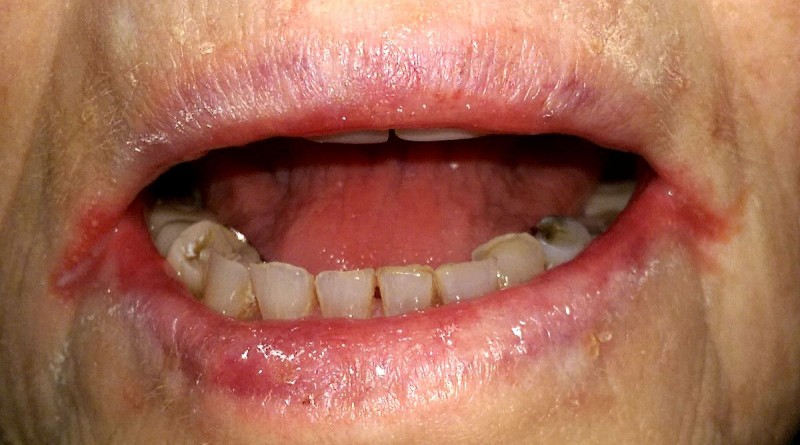
Angular cheilitis might sound like a mouthful, but it's essentially a fancy term for a rather uncomfortable and often bothersome condition. This article delves into the world of angular cheilitis, exploring its common signs, causes, and effective remedies. So, if you've been noticing those pesky cracks around the corners of your mouth, sit tight as we unravel the mystery.
Angular cheilitis, also known as perleche or angular stomatitis, is a condition characterized by painful cracks or splits at the corners of the mouth. These cracks can sometimes extend onto the lips, causing discomfort and an unsightly appearance.
Picture this: you're enjoying your favorite meal, but each bite feels like a challenge due to the painful cracks at the corners of your mouth. That's the perplexity angular cheilitis presents - a seemingly simple act like eating turning into a discomforting ordeal.
Angular cheilitis isn't one to hide in the shadows; its signs are often quite apparent. Here are some common indicators to watch out for:
The most recognizable sign is the presence of cracks or splits at the corners of the mouth. These can vary in severity, from slight discomfort to more extensive and painful crevices.
Accompanying the cracks is redness and inflammation. The affected area may appear swollen, making it even more bothersome.
The skin around the corners of the mouth may become excessively dry and flaky. This can add to the discomfort and contribute to the overall appearance of the condition.
If you've noticed an itch or a burning sensation around the affected area, it could be another sign of angular cheilitis. Scratching, though, might worsen the condition.
In some cases, the cracks may scab over. While scabs are part of the body's natural healing process, they can also be uncomfortable and visually unappealing.
Understanding the underlying causes of angular cheilitis can help in its prevention and management. Several factors contribute to the development of this condition:
Microorganisms, especially yeast (Candida) and bacteria, can take advantage of the moist environment around the corners of the mouth. Their overgrowth can lead to irritation and cracking.
Deficiencies in certain vitamins and minerals, such as B vitamins, iron, and zinc, can weaken the skin's barrier function, making it more susceptible to cracking.
Individuals who tend to drool or have excessive saliva production might experience moisture accumulation at the mouth corners. This constant moisture can contribute to skin breakdown.
Dentures that don't fit properly can cause friction and irritation, eventually leading to cracks at the corners of the mouth.
Thankfully, angular cheilitis is not a life sentence. With the right approach, you can manage and even prevent its occurrence. Here's how:
Since moisture plays a significant role in the development of angular cheilitis, keeping the affected area dry is crucial. Pat the corners of your mouth gently with a clean tissue if you notice excessive moisture.
If yeast overgrowth is suspected, antifungal creams can be applied to the affected area. Make sure to follow your healthcare provider's recommendations.
Maintaining a balanced diet rich in B vitamins, iron, and zinc can strengthen your skin's defenses against angular cheilitis.
Certain health conditions, such as diabetes, can make you more prone to angular cheilitis. Managing these conditions effectively can help prevent its recurrence.
In your quest to tackle angular cheilitis, it's important to separate fact from fiction. Here are some common myths debunked:
Contrary to popular belief, licking your lips can worsen the condition. Saliva contains enzymes that can further irritate the already sensitive skin.
While steroid creams can be effective, prolonged and unsupervised use can lead to skin thinning and other complications. Always consult a healthcare professional before using them.
It might be tempting to pick at scabs or pimples, but doing so can delay the healing process and increase the risk of infection.
While mild cases of angular cheilitis can often be managed at home, there are instances when professional intervention is necessary:
If the cracks and pain persist despite home remedies, it's time to consult a healthcare provider.
If the condition spreads to other areas of the face or worsens significantly, seeking medical advice is crucial.
If angular cheilitis interferes with your ability to eat or speak, don't hesitate to seek help.
Angular cheilitis might be a bothersome condition, but it's certainly not an unbeatable one. By understanding its signs, causes, and appropriate management strategies, you can put those discomforting cracks behind you.
Remember, your skin's health reflects your overall well-being, so it's essential to take care of it. If angular cheilitis comes knocking on your door, don't fret – armed with knowledge, you can show it the way out.
The Warning Signs of Angina: What to Watch Out For
Your blood type can have an impact on your health in this way